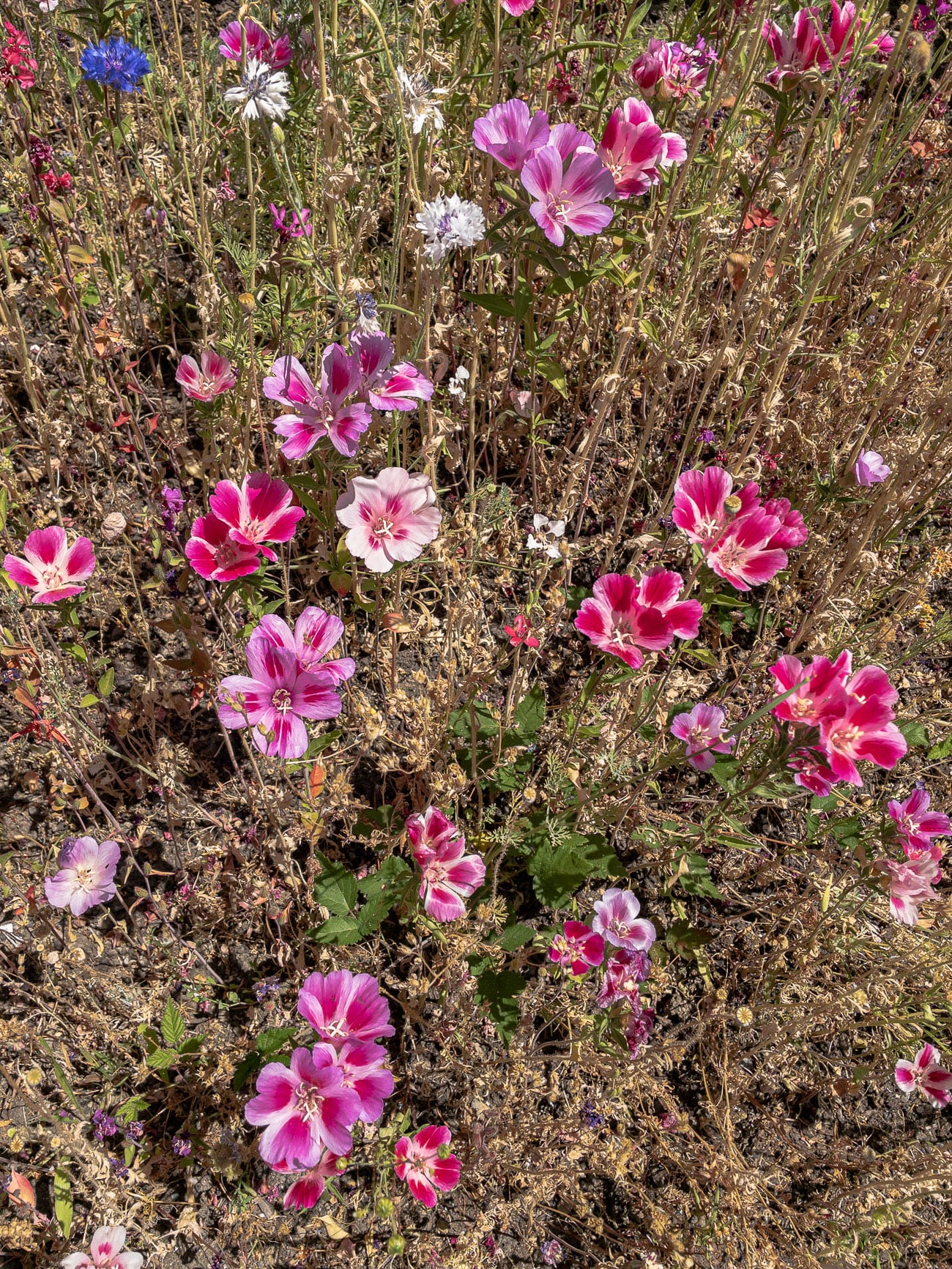
February 13, 2022 @ 12:37pm
Okay, so what did I plant? Nothing fancy. This is a Pacific Northwest Mix of 25 types of seeds—most are native to the West, some are not but have naturalized, a few others are seen as well-adapted to our climate. I bought the packets at Fred Meyer (a grocery-home-garden store). I over-seeded, using about 4 packets.

May 21, 2021 @ 3:18pm
All the flowers were going to be a surprise—I had no idea what would pop up first, or in what order throughout the year. This extremely bright bluebell (Phacelia campanularia) is native to Southern California. Its natural setting is described as “slopes in hot, dry places”—exactly what I gave it. No surprise it won the race.

June 4, 2021 @ 4:09pm
A couple weeks later and these bird’s eye gilia (Gilia tricolor) were everywhere. These flowers, with their airbrushed edges, might be garish if large but they were small and alluring.

June 4, 2021 @ 4:12pm
The sparkling white and blue wildflowers were an excellent accent, blending perfectly into the rest of the front yard.

June 18, 2021 @ 9:44am
It’s called Tidy Tips (Layia platyglossa) and it’s hard to top this scenario: you plant a seed, a wildflower grows, it’s painted perfectly.

June 18, 2021 @ 9:44am
The bumblebee overnighted on this cornflower and didn’t move until the sun rose a bit higher.

June 23, 2021 @ 4:55pm
It seemed like a new type of flower appeared every single week. Thanks to whoever planned that.

June 18, 2021 @ 9:42pm
Look how the sun hits the poppies in the morning. A mix of clarkia and cornflower grow below the tall stems. If this was a lawn, you wouldn’t be drawn outside at 9am; imagine starting your day with this.

June 4, 2021 @ 3:46pm
I forgot about this until I was going through photos. It might be a hoverfly except it appears to be carrying pollen on its hind legs. What where? The blue stuff! Blue pollen? From blue stamens?! Is this real life?

June 4, 2021 @ 4:05pm
I don’t believe in reincarnation but if it happens this is my sworn statement that I’d like to return as a metallic bee.

July 3, 2021 @ 2:38pm
Things are dead; things are alive. I like the contrast of the dry ground with the bright pink godentia. Clarkia amoena is known as farewell to spring, which was long-gone. I’d guess this year they’ll bloom earlier, on a more natural cycle.

August 1, 2021 @ 1:22pm
Now everything has gone to seed. The poppies stand upright—their heads full. These were the easiest seeds to collect; all other seeds heads I broke apart and scattered on the spot. About a month later I cut down whatever stems hadn’t fallen, to help with re-seeding the slope.

October 19, 2021 @ 3:00pm
By October self-seeding had worked and the slope was covered with sprouts. Then an early frost appeared to threaten everything. This icy California poppy looked dead and I wondered how the coming winter would affect the annuals that were already growing.

October 31, 2021 @ 10:34am
Well, it did not affect them. Even a foot of snow in late December didn’t harm the slope. It has been green ever since. And now, one year after the project began, it’s getting ready to flower. I will continue to help scatter the seeds each year, but this former lawn no longer relies on me to look its best.